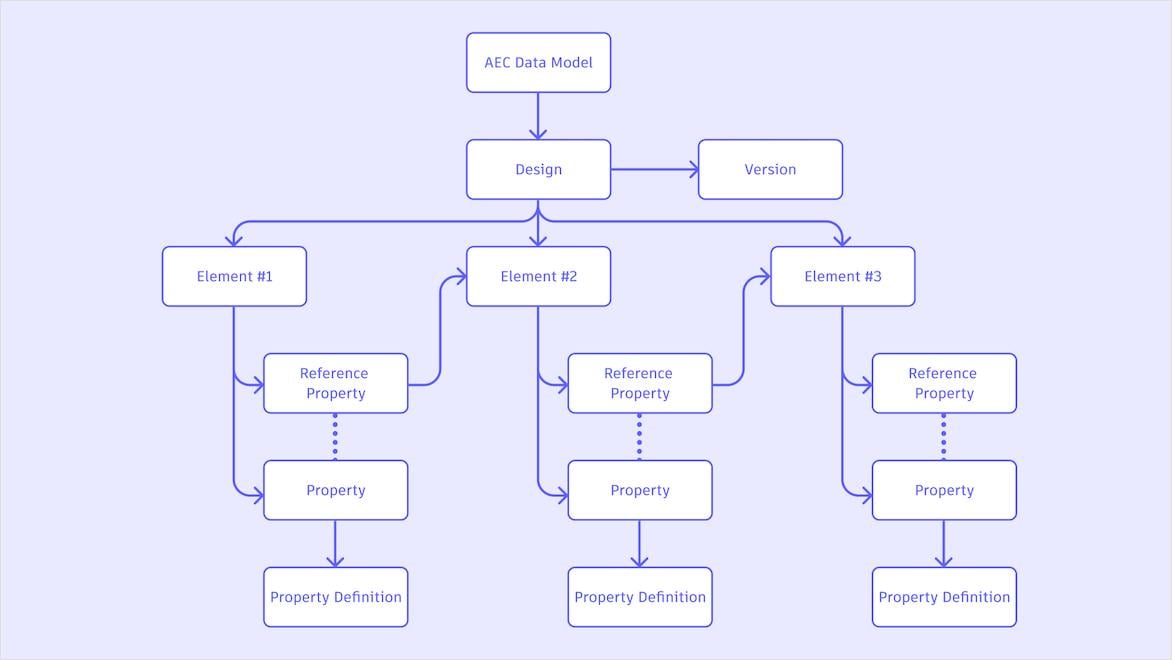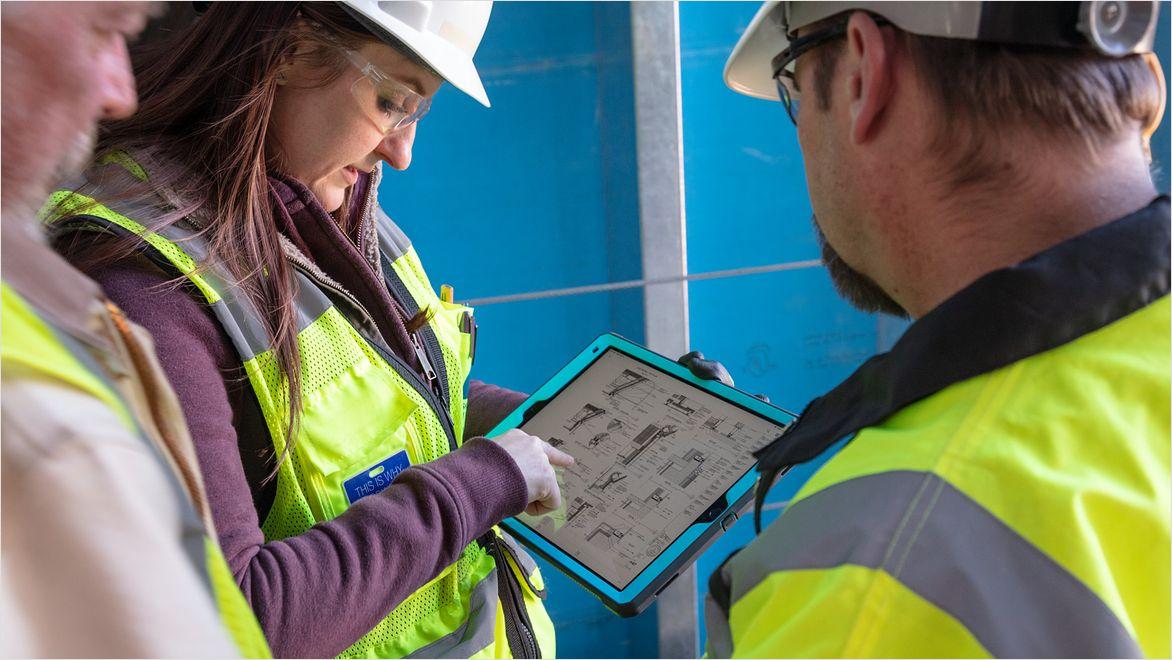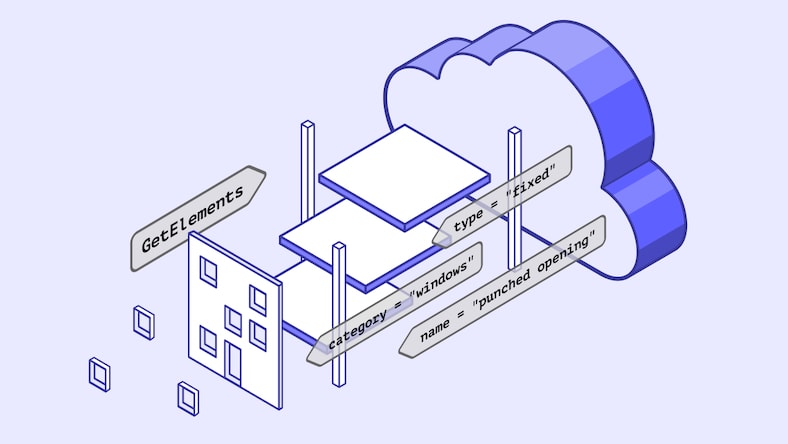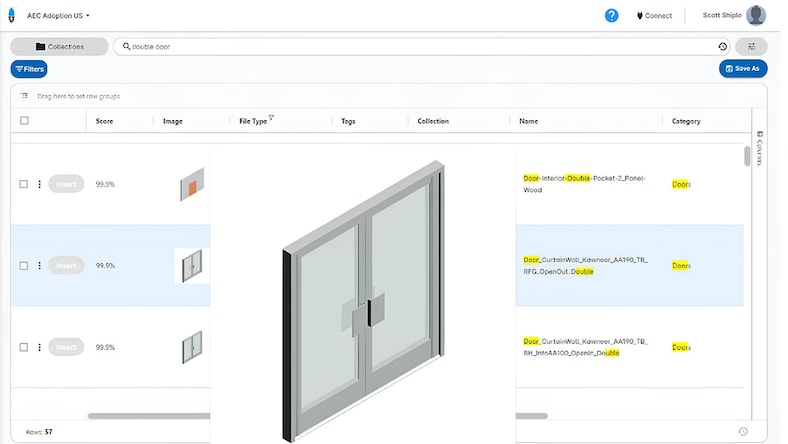& Construction

Integrated BIM tools, including Revit, AutoCAD, and Civil 3D
& Manufacturing

Professional CAD/CAM tools built on Inventor and AutoCAD
The amount of data and tools on architecture, engineering, construction, and operations (AECO) projects has exploded. Effective data management now requires teams to have access to granular-level data, facilitating more efficient cloud-based collaboration, and more powerful data control and permissions. Good data management breaks down today’s information silos and helps data flow where it is needed, reducing rework and outdated data. By managing data effectively, data becomes available to a more diverse set of stakeholders, empowering better decisions through powerful dashboards, cutting down on time spent looking for the right information, and powering automation to drive efficiency. In short, the right data is available to the right person at the right time.
The AEC data model is a set of capabilities and data structures that establish a shared language across a project lifecycle. The approach democratizes data access via a cloud-based API. This frees architects, engineers, and contractors from relying on data trapped in large files or unstructured and siloed data, which slows everyone down and hinders collaboration. The AEC data model’s common framework reduces duplication of data across products and systems, eliminating the need for time-intensive workarounds.
The mission of Autodesk’s AEC data model is to empower better AECO outcomes through more useful, connected, and accessible data. The model supports Autodesk’s vision of an open, extensible, and trusted data foundation connecting AECO teams in their tools of choice.
Better data can help AECO professionals understand the health and performance of their businesses: where to invest resources, gain efficiencies, reduce cost, and streamline operations.
Leveraging the cloud, the AEC data model can break files down to unlock the information stored within them. Specific pieces of data can be served to the right person at the right time.
Data that is freed from files can be used in multiple contexts for project insights, tailored workflows, artificial intelligence, and more.
The AEC data model enables data to flow across the project lifecycle, across stakeholders and software types.
The Autodesk Docs and Autodesk Forma integration streamlines workflows across design, construction, and operations for your AEC data - unlocking opportunities for connected workflows, improved team collaboration, and enhanced project delivery.
AEC Data Model API provides cloud access to granular data without need for additional processing or plugins.
The Autodesk Parameters Service structures how data is defined and communicated, helping to align models to company and industry standards.
Content Catalog is a cloud-based digital asset management tool used to manage and distribute BIM content.
Learn how to capture more value from your data with Autodesk Docs, now powered by the AEC data model.
The AEC Data Model API makes a granular data structure available to Autodesk Docs users for better designs and faster projects.
Content Catalog enables the repeatable use of digital assets across users, products, and projects, driving designer efficiency and deliverable accuracy. It represents a key example of how Autodesk is increasing accessibility of data in Autodesk Docs.
The AEC data model roadmap provides a view from the platform team of the feature development pipeline.
Andrew Davis, regional technology lead at Jacobs, talks about driving digital transformation in your business.
With the release of the AEC Data Model API, you can now build and deploy apps in your production environment.
Democratize data access across departments and applications using Autodesk Platform Services’ AEC data model.
Data democratization enables AECO project teams to share, analyze, and use information seamlessly. This is possible by making data available to everyone who has permission to access it. Data democratization is essential for a data-driven culture, breaking down information silos and ensuring that data flows where it is needed across the lifecycle of a project.
Achieving data democratization requires three steps: enabling granular access to data; ensuring that granular data can move efficiently across boundaries and among people and software; and getting the data where and when it’s needed.
Autodesk is supporting data democratization through its AEC Data Model API, which enables data to be accessed via files or, at a granular level, the most elemental data that makes up a model or file. This granular data structure will be accessible to all Autodesk Docs users.
Autodesk has also acquired Datum360, which will address the immediate need for better, more connected data. Datum360 connects data currently stored across separate silos and increases the accessibility of model data. This tool, which can be configured to varying industry classification standards, offers seamless integration of data from distinct sources.
Granular data is the underlying data that makes up a file or model at the most elemental level. File-based project work is challenging and can limit information sharing among project members. By breaking down data smaller than files, collaboration and integrations in the cloud are possible.
Historically, granular data has only been accessible to a handful of technical experts. With the Autodesk AEC Data Model APIs, any customers with Autodesk Docs access can tap into granular-level AEC model data. This lets collaborators use the data points they need rather than having to interact with the entire model.
Building information modeling (BIM) is used to create and manage data during design, construction, and operations processes of a built project. BIM integrates data from across the project to create detailed digital representations that are managed in an open cloud platform, enabling real-time collaboration.
Getting the most out of BIM data requires a common data environment where all project members have access to the data they need. Effective BIM data management is key to unlocking collaboration and productivity across project partners. It enables the right data to get to the people who need it and creates opportunities to realize efficiencies in construction and design projects.
The AEC Data Model API allows you to build and deploy apps in your production environment. This is possible because monolithic files, like .rvts and .dwgs, are broken into bits of granular data that are managed on a secured cloud. This granular, object-level data is accessible via easy-to-use APIs, ensuring that the right data is available to the right people.
Over time, the AEC Data Model APIs will continue to grow, allowing developers to read, write, and extend subsets of models through cloud-based workflows using a single interface—without the need to write custom plug-ins for individual desktop applications.
ISO 19650 is an international set of standards for information management over the lifecycle of a built project. It provides clear definitions for the information needed by the asset owner or project client—as well as for the methods, processes, and deadlines required for the efficient transfer of information between team members.
These standards are essential for supporting a common data environment, the digital hub where information comes together as part of a typical building information modeling (BIM) workflow. This hub includes information created during a project, which is made available to everyone who is given access to the data.





